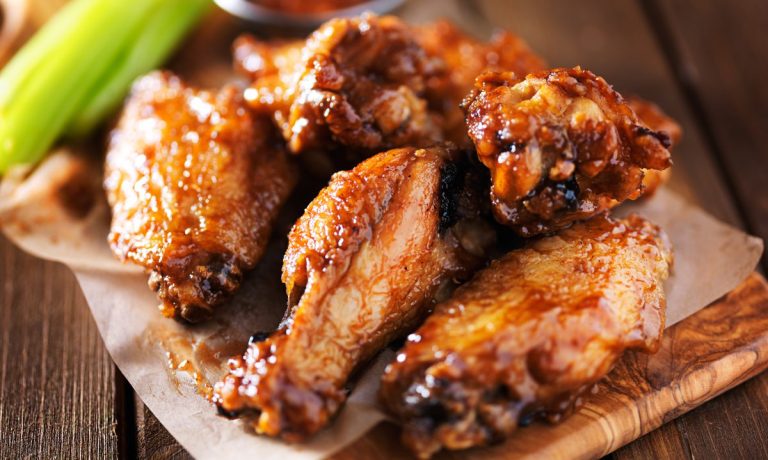
As restaurants continue to come up against labor challenges, many are seeking ways to integrate automation into more and more of their day-to-day operations.
Earlier this month, for instance, Santa Monica-based incubator Wavemaker Labs, known for launching a range of foodservice automation brands including Miso Robotics, and Atlanta-based fast-casual brand Wing Zone, which has more than 60 locations in the U.S. and abroad, announced the launch of Wing Zone Labs, an automation-focused franchisee in Southern California.
Kevin Morris, president of Wavemaker Labs and chief financial officer and board member of Miso Robotics, spoke with PYMNTS about how this initiative plays into the company’s vision of the future of the industry.
“We’re taking a growing category, which is fried wings,” Morris said. “The category has done quite well over COVID. Our goal is to build the restaurant or the franchise of the future. … So, what we’re trying to do is take a growing food category … that is very delivery- and takeout-focused but yet has … a lot of labor issues … [and] inject automation, so that we can allow our restaurants to have profitable margins and allow the employees that are in the restaurant to focus more on some of the higher-value things.”
Where They Want It, When They Want It
Indeed, since the start of the pandemic, demand for delivery has skyrocketed, and that demand has remained in place even as many consumers have returned to their daily lives. Contagion concerns or no, diners are ordering more delivery, according to data from PYMNTS’ April study, “Digital Divide: The Key Factors That Drive Restaurant Choice,” created in collaboration with Paytronix.
Read more: From Outdoor Seating to Touchless Payments, Dining Habits Are Changing
The study, which drew from a survey of more than 2,600 U.S. adults, found that consumers are dramatically more likely to be ordering for delivery via aggregators more often than they used to. The same goes for ordering online via a restaurant’s site and for ordering for pickup via phone call.
Additionally, research from the March/April edition of the Digital Divide series, “The Digital Divide: Regional Variations in U.S. Food Ordering Trends and Digital Adoption, also created in collaboration with Paytronix, found that about one in three consumers order from delivery aggregators each month.
See more: New Research Shows That Regional Dining Quirks Matter in Tailoring Restaurant Offers
Here and Now
In addition to wings’ popularity on digital ordering channels, Morris noted that the category is well-suited to get the automation treatment because the technology is more straightforward and achievable than other kinds of takeout- and delivery-friendly foods.
“Wings are a category that’s a bit easier to automate than, let’s say, sandwiches,” Morris said. “They’re pretty commoditized in the sense that there’s not really a lot of custom orders.”
Unlike a burger, wings are not cooked to different degrees of doneness, and unlike sandwiches, there are no ingredient additions or substitutions to worry about.
In general, Morris said, in the rush to automate the industry, some may be putting the cart before the horse, as it were, going all in on systems that may not be ready to take hold just yet.
Specifically, he said he believes that some of the delivery automation efforts, with drones and sidewalk rovers transporting restaurant orders, may be some time away from catching on. He added that while “obviously” these kinds of innovations “are the future,” there’s a long way to go until they can “gain traction.”
He said not only is transporting food a tricky business, but also that the red tape of getting legal approval across cities, states and counties is slowing down the process significantly.
“I think it’s going to take quite a while to be more ubiquitous,” he said. “You’re not only dealing with trying to get customers to adopt them, but you’re dealing with laws, [and] every jurisdiction has a different law.”
Just Getting Started
Looking ahead to the nearer future, Morris predicted that smart food storage lockers will become more common, as will the use of computer vision in food preparation and production tracking food quality and cooking progress.
Additionally, while he said he expects that robotics will at some point be able to communicate across different back-of-house processes, he noted that, given that different systems are made by different technology companies, it will take consolidation in the space (or other providers creating systems that can integrate these disparate pieces) for that to be possible.
Overall, he said many in the industry are underestimating the importance of technologies such as these.
“A lot of people we’ve spoken with think that the labor crisis is going to go away, and wages will go back down, but we don’t see that,” Morris said. “I think this is the first step of what’s going to be a windfall of all sorts of back-of-house automation in all food categories.”